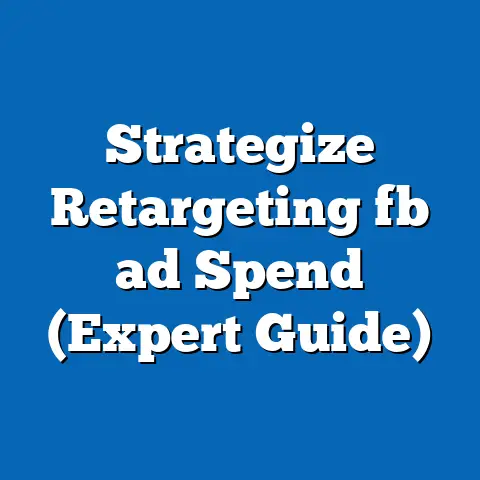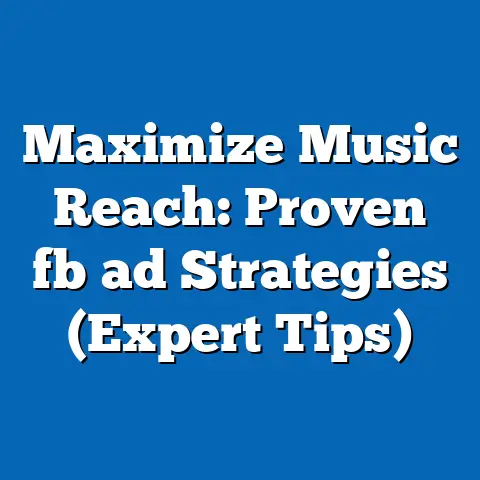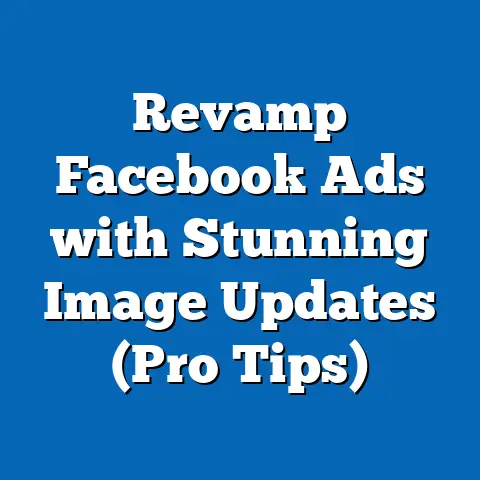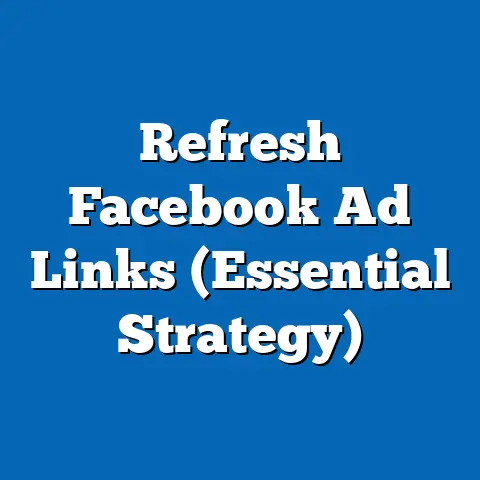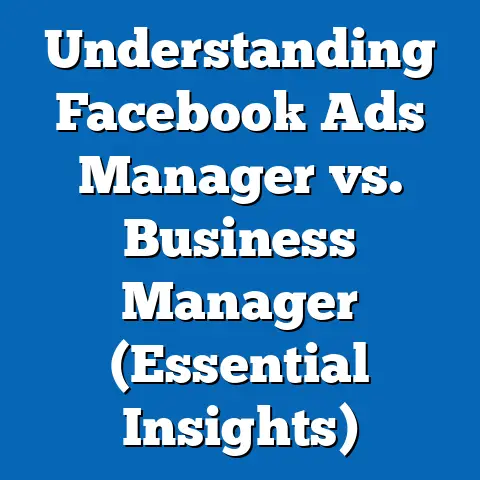Unlocking Facebook’s Political Ad Library (Insider Insights)
I’ve seen firsthand how political campaigns can stumble, not because of bad ideas, but because they fail to understand the landscape. One of the biggest mistakes I’ve witnessed is underestimating the importance of transparency, especially when it comes to political advertising. Think of it like this: you wouldn’t walk into a negotiation without knowing your opponent’s position, would you? Yet, many campaigns launch Facebook ads without a clear picture of what their rivals are doing. This is where the Facebook Political Ad Library becomes an indispensable weapon.
Imagine a scenario: a local mayoral candidate launches a series of ads attacking their opponent’s stance on property taxes. Sounds standard, right? But without checking the Ad Library, they’re blind to the fact that their opponent is already running a counter-narrative, highlighting the candidate’s own complex tax history. The result? The attack falls flat, and the candidate loses credibility.
The Facebook Political Ad Library isn’t just a nice-to-have; it’s a crucial tool for anyone navigating the complex world of political advertising. It’s a treasure trove of information that can help you understand the dynamics of political discourse, refine your messaging, and ultimately, run a more effective campaign. In this guide, I’ll share insider insights on how to unlock the full potential of this powerful resource.
Understanding Facebook’s Political Ad Library
So, what exactly is the Facebook Political Ad Library? In simple terms, it’s a publicly accessible database containing information about ads related to politics and issues of national importance that run on Facebook and Instagram. It’s not just a collection of ads; it’s a comprehensive archive that includes details like the ad creative, the amount spent, the demographics targeted, and the ad’s performance metrics.
The Ad Library wasn’t born out of altruism. It was a direct response to the rising tide of concern over misinformation and foreign interference in elections, especially after the 2016 US Presidential election. Facebook faced immense pressure to increase transparency and accountability, and the Ad Library was a key part of their solution.
The data available within the library is surprisingly granular. You can see:
- Ad Creatives: The actual text and images used in the ad.
- Spending Data: The exact amount spent on the ad.
- Demographic Targeting: The age, gender, location, and interests of the people the ad was shown to.
- Impressions: The number of times the ad was displayed.
- Date Range: When the ad ran.
- Page Information: Details about the Facebook page running the ad, including verification status.
This wealth of information makes the Ad Library a powerful tool for anyone interested in understanding the dynamics of political advertising.
Takeaway: The Facebook Political Ad Library is a public database providing detailed information about political and issue-based ads on Facebook and Instagram. It was created in response to concerns over misinformation and offers granular data on ad creatives, spending, targeting, and performance.
Navigating the Library: Key Features and Tools
Accessing and navigating the Political Ad Library is straightforward. Here’s a step-by-step guide:
- Go to the Ad Library: You can find it by searching “Facebook Ad Library” on Google or directly visiting https://www.facebook.com/ads/library.
- Select Your Location: Choose the country you’re interested in. This is important because ad regulations and content vary by region.
- Search for Ads: You have several options:
- Search by Keyword: Enter keywords related to the topic, candidate, or issue you’re interested in.
- Search by Page: Enter the name of a Facebook Page to see all the ads they’re running.
- Search for Issues, Elections or Politics: This option allows you to broadly filter for political or issue-based ads.
- Filter Your Results: Use the filters on the left-hand side to narrow your search:
- Ad Status: Active or inactive ads.
- Date Range: Specify a time period.
- Platforms: Facebook, Instagram, or both.
- Analyze Individual Ads: Click on an ad to see more details, including:
- The ad creative itself.
- The total amount spent.
- The number of impressions.
- The demographics targeted.
- The Page responsible for the ad.
- Search by Keyword: Enter keywords related to the topic, candidate, or issue you’re interested in.
- Search by Page: Enter the name of a Facebook Page to see all the ads they’re running.
- Search for Issues, Elections or Politics: This option allows you to broadly filter for political or issue-based ads.
- Ad Status: Active or inactive ads.
- Date Range: Specify a time period.
- Platforms: Facebook, Instagram, or both.
- The ad creative itself.
- The total amount spent.
- The number of impressions.
- The demographics targeted.
- The Page responsible for the ad.
Key features that make the Ad Library particularly useful include:
- Search Function: The robust search function allows you to quickly find ads related to specific keywords, candidates, or issues.
- Filtering: The filters enable you to narrow your search and focus on the ads that are most relevant to your interests.
- Tracking Over Time: You can track the performance of ads over time, allowing you to see how campaigns are evolving their messaging and targeting.
- Competitor Analysis: The ability to view all the ads run by a specific Page makes it easy to analyze your competitors’ strategies.
For example, imagine you’re working on a campaign for a candidate running for governor. You can use the Ad Library to:
- Search for ads run by the incumbent governor to see their current messaging.
- Search for ads related to key issues like healthcare or education to see how different campaigns are addressing them.
- Filter for ads targeting specific demographics, like young voters or senior citizens, to understand how campaigns are tailoring their messages.
By carefully navigating the Ad Library and utilizing its key features, you can gain valuable insights into the political advertising landscape.
Takeaway: Accessing the Facebook Political Ad Library is straightforward, offering powerful search and filtering capabilities. These features enable users to track ad performance over time, analyze competitors’ strategies, and understand how campaigns are targeting different demographics.
Real-World Applications: Case Studies
The true power of the Facebook Political Ad Library lies in its ability to inform and improve campaign strategies. Let’s look at some real-world examples:
Case Study 1: Data-Driven Messaging in a Local Election
In a recent local election, a candidate for city council used the Ad Library to analyze their opponent’s messaging. They noticed that the opponent was heavily focused on crime rates, using fear-based tactics to appeal to voters. Instead of directly attacking the opponent’s claims, the candidate used the Ad Library to identify ads that resonated with voters in the past, focusing on positive messages about community building and economic development. They then crafted their own ads with similar themes, effectively counteracting the opponent’s negative messaging. The result? The candidate won by a comfortable margin, demonstrating the power of data-driven messaging.
Case Study 2: Real-Time Strategy Adjustments in a National Campaign
During a national campaign, a political party used the Ad Library to monitor the effectiveness of their ads in real-time. They noticed that certain ads targeting specific demographics were underperforming. By analyzing the Ad Library, they identified competitor ads that were resonating with those same demographics. They then quickly adjusted their own ads, incorporating elements that were proving successful for their competitors. This agility allowed them to maintain a competitive edge and ultimately achieve their campaign goals.
Case Study 3: The Pitfalls of Ignoring the Ad Library
In contrast to the success stories, I’ve also seen campaigns that completely neglected the Ad Library, with disastrous results. One campaign launched a series of ads attacking their opponent’s environmental record, only to discover that the opponent had already run a series of ads highlighting their own environmental initiatives. The attack backfired, and the campaign lost credibility. This underscores the importance of doing your homework and understanding the existing advertising landscape before launching your own campaign.
Lessons Learned:
- Data-Driven Messaging: Use the Ad Library to identify messages that resonate with voters and craft your own ads accordingly.
- Real-Time Adjustments: Monitor the performance of your ads in real-time and adjust your strategy based on what’s working and what’s not.
- Do Your Homework: Always analyze the existing advertising landscape before launching your own campaign to avoid embarrassing missteps.
Takeaway: Successful political campaigns leverage the Facebook Political Ad Library to inform their messaging, target demographics effectively, and adjust their strategies in real-time. Campaigns that neglect to use the library risk launching ineffective or even counterproductive ads.
The Role of Transparency in Political Advertising
The Facebook Political Ad Library is more than just a tool for campaigns; it’s a crucial component of transparency in political advertising. By making this data publicly available, Facebook is empowering voters to be more informed and holding advertisers accountable for their messaging.
The availability of this data can lead to:
- More Informed Voters: Voters can see who is funding political ads, what messages are being used, and who is being targeted.
- Increased Accountability: Advertisers are less likely to engage in deceptive or misleading practices when they know their ads are being scrutinized.
- A More Level Playing Field: Smaller campaigns with limited resources can use the Ad Library to analyze their competitors’ strategies and level the playing field.
However, transparency also comes with ethical considerations. It’s important to use the Ad Library responsibly and avoid:
- Misrepresenting Data: Don’t cherry-pick data or present it in a misleading way to support your own agenda.
- Doxing or Harassment: The Ad Library should not be used to identify and harass individuals who are targeted by political ads.
- Violating Privacy: Respect the privacy of individuals and avoid using the Ad Library to collect personal information.
Ultimately, the goal of the Ad Library is to promote a more informed and transparent political discourse. By using this tool responsibly, we can all contribute to a healthier democracy.
Takeaway: The Facebook Political Ad Library promotes transparency in political advertising, leading to more informed voters and increased accountability for advertisers. However, it’s crucial to use the library responsibly and avoid misrepresenting data or violating privacy.
Future of Political Advertising on Facebook
The Facebook Political Ad Library is constantly evolving in response to changes in regulations, user privacy concerns, and advancements in technology. I believe we can expect to see further enhancements in the future, such as:
- Improved Search Functionality: More sophisticated search algorithms that can better identify and categorize political ads.
- Enhanced Data Visualization: Interactive dashboards that make it easier to analyze trends and patterns in political advertising.
- Integration with Fact-Checking Organizations: Partnerships with fact-checking organizations to identify and flag misleading or false political ads.
- Greater Transparency Around Funding Sources: More detailed information about the individuals and organizations funding political ads.
These potential enhancements could further improve the utility of the Ad Library for advertisers, researchers, and voters alike. However, it’s also important to be aware of the potential challenges:
- The Rise of “Dark Ads”: Political ads that are not publicly visible and are only shown to a small, targeted audience. These ads can be difficult to track and can be used to spread misinformation.
- The Use of AI-Generated Content: The increasing sophistication of AI-generated content makes it more difficult to distinguish between real and fake political ads.
- The Evolving Regulatory Landscape: Changes in regulations around political advertising could impact the way the Ad Library operates.
Despite these challenges, I remain optimistic about the future of political advertising on Facebook. By continuing to prioritize transparency and accountability, Facebook can play a vital role in promoting a more informed and democratic society.
Takeaway: The Facebook Political Ad Library is likely to evolve with improved search functionality, enhanced data visualization, and integration with fact-checking organizations. However, challenges remain, including the rise of “dark ads,” the use of AI-generated content, and the evolving regulatory landscape.
Conclusion
The Facebook Political Ad Library is a powerful tool that can be used to understand the dynamics of political advertising, refine your messaging, and ultimately, run a more effective campaign. By navigating the library effectively, analyzing real-world case studies, and understanding the role of transparency, you can unlock its full potential.
Remember, the Ad Library is not just about winning elections; it’s about promoting a more informed and democratic society. By using this tool responsibly, we can all contribute to a healthier political discourse. So, dive in, explore, and start uncovering the insights that can help you make a difference. The future of political advertising is transparent, and the Facebook Political Ad Library is your key to unlocking it.

